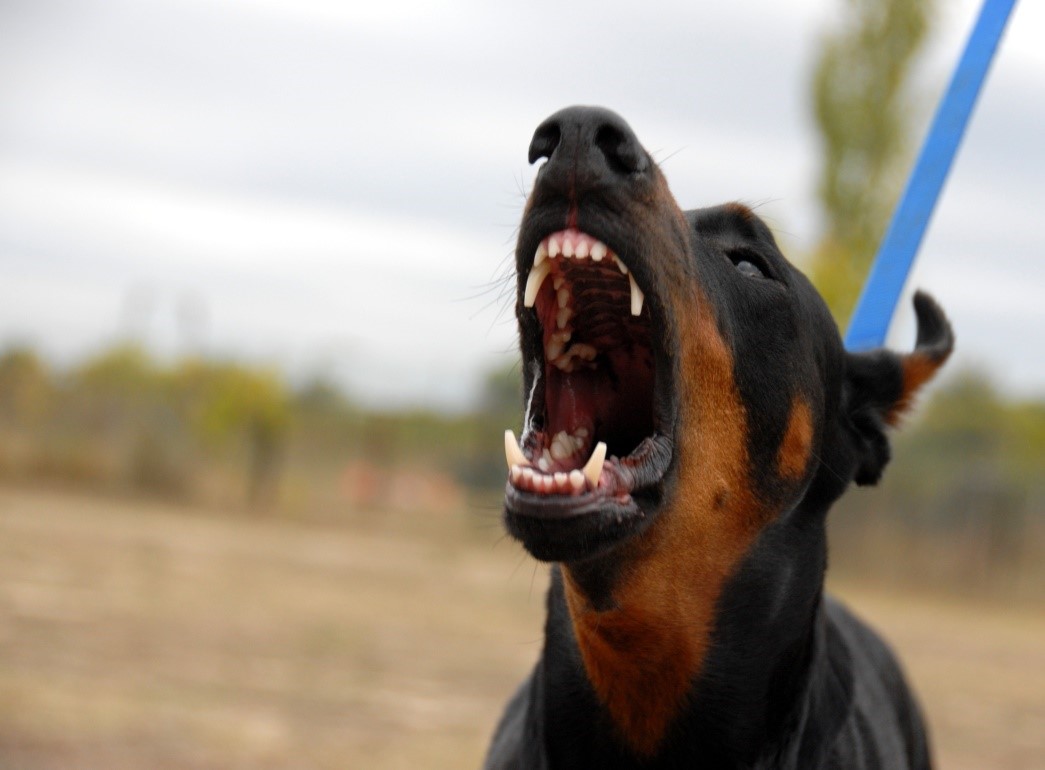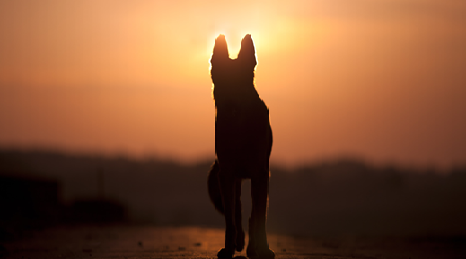How to Remedy My Dogs Increasing Aggression
Back to Pet Blog

24th November 2016 written by Holly Barry
All dogs have a range of behaviours that they use to cope with any stressful situations or perceived challenges that they encounter each day. Many of these traits are passive in nature, such as the dog moving away from something it feels uncomfortable about, or displaying appeasement, through ways such as rolling over onto its back. However, if the dog continues to feel stressed by a situation, this passivity can quickly turn into aggression.
The triggers for aggressive behaviour in dogs can vary, although there are many common patterns, such as food insecurity, boredom, jealousy of family members, such as children, and struggling to determine ranking in a new environment. Rescue dogs, for example, can often appear to settle in well during the first few weeks in their new home, and can then suddenly start to express symptoms of aggression, as they become confident enough to try to assert their position. For this reason, it’s important to understand how to integrate a rescue dog into your home, and to work to minimise the chances of aggression developing. Whether or not you have a rescue dog, it’s important to understand what might cause a dog to become stressed, and to identify the signs of increasing levels of aggression.
Traits to watch out for
Canine aggression can be divided into a number of different types, including interdog aggression, dominance behaviour, possessive and territorial aggression, prey drive behaviour, and defensive or fear-based aggression. Dividing these types into offensive and defensive behaviours is useful, as the warning signs for each can be very different. Defensive behaviours can include lowering the head, crouching or rolling over, and hanging the tail low or between the legs. The warning signs for offensive aggression, however, are much more confrontational, and include growling, snarling, full eye contact and firm staring, holding the tail and head up, snapping, baring the teeth, and standing in a fixed, rigid position.
Increasing levels of aggressive behaviour can be caused by a number of things, such as reaching sexual maturity, poor breeding, changes in the dog’s environment, pain or illness and a lack of socialisation and dog training.
A responsible dog owner should tune into any subtle changes in behaviour in their dog, to understand any fear or other trigger that could become more pronounced over time and lead to aggression. If your dog is showing these signs, it’s important to analyse the situation that triggered the change in behaviour. Is the aggression directed at a stranger, or another family member? Does it centre around mealtimes, or a favourite toy? Is the aggression only shown towards other dogs, and if so, is it only certain breeds or dogs of one sex that trigger the aggression. By working out what is causing the dog to become stressed, it will be easier to form an action plan for tackling the problem. This can range from basic desensitisation training that you can do yourself, to calling in a pet behaviour specialist for more advanced training. Of course, if pain or illness is causing the aggression, then veterinary treatment could resolve the issue.
Prevention
It goes without saying that preventing the development of aggression in dogs is far easier than resolving aggression issues once they have developed. Teaching a puppy good socialisation skills from a very early age is essential to produce a balanced, happy dog that can handle all sorts of life experiences in a calm and relaxed manner. Professional training classes are recommended for all dogs, not just for puppies, and can be a fun and stimulating way for a dog to interact with other dogs and people, throughout its life.
Aggression that is linked to sexual maturity can be minimised, by having the dog neutered or spayed. This will quickly alleviate aggressive tendencies that are being driven by surging hormones.
Adopting a positive reinforcement strategy when training and handling a dog will help it to stay calm and learn from you. Punishing a dog for bad behaviour or ‘mistakes’ will only increase the dog’s anxiety levels, and could actually be interpreted by the dog as aggression that needs a response.
If you know that certain environmental factors trigger aggression in your dog, you can work to minimise these, through gentle training. If the dog doesn’t like men, for example, enlisting the help of some calm male friends who have experience with dogs themselves, could help your dog overcome this fear-based behaviour. If your dog guards his food aggressively, try gently giving him extra tidbits during mealtimes, so that he associates you approaching with something positive, rather than suspecting that you will take his food away.
If your dog is showing aggressive tendencies that you don’t understand, or that you feel you cannot handle, it’s sensible to speak to a professional canine behaviourist. He or she will typically meet with you to observe the dog, particularly in the environment that triggers the aggression, and to work out the underlying reasons for the aggression. The behaviourist will then either make recommendations for you to follow over the following weeks or months, or will continue to work with you in person, to resolve or minimise the issue through desensitisation and other strategies.
The risks
It’s common for dog owners to ignore or ‘play down’ aggressive tendencies in their dogs, and many owners learn to ‘cope’ with it, by avoiding certain situations or restricting the dog’s freedom by not allowing it off the lead, for example. In an ideal world, any owner of a dog that is showing aggressive behaviour traits would want to take a proactive approach to resolving the issue, for the sake of the dog’s emotional wellbeing and quality of life.
However, recent changes in the law mean that owners could find themselves guilty of a criminal offence should their dog attack another person, either in a public space or on private property. In the most serious of cases, where a dog attack results in the death of the victim, the owner could receive a prison sentence of up to 14 years. It is hoped that these tough new laws will help owners understand the importance of recognising canine aggression, and dealing with it before it escalates into a serious problem.

Other pet deals you might like

Summer Guide to Grooming your Dog
Dogs come in all kinds of different shapes and sizes, but as the weather is currently at its peak here in the UK, its worth knowing how often our dogs should visit the local grooming salon during the summer months. For dogs with thick or long coats it can get particularly uncomfortable... How to take part in National Pet Remembrance Day
How to take part in National Pet Remembrance Day
All pet owners know that after introducing an animal into their home, these furry, scaly or feathered friends swiftly become part of the family. They’re there for us when we’re down, never judgmental and always around to lighten the mood. It’s therefore always a difficult time when a pet dies.Assistance Dogs - Behaviour Guide
There are over 7,000 disabled individuals in the UK* who rely on assistance dogs to help with simple everyday task in addition to providing emotional support and giving each individual greater confidence, assistance dogs are life savers. They really do change lives.Human Food for Dogs - Can & Can not eat list
Did you know that French fries are the equivalent of poison for dogs? Yes, neither did we. So many times, we share human foods with our dogs without really giving it a second thought, and that is a reflex we should change.
